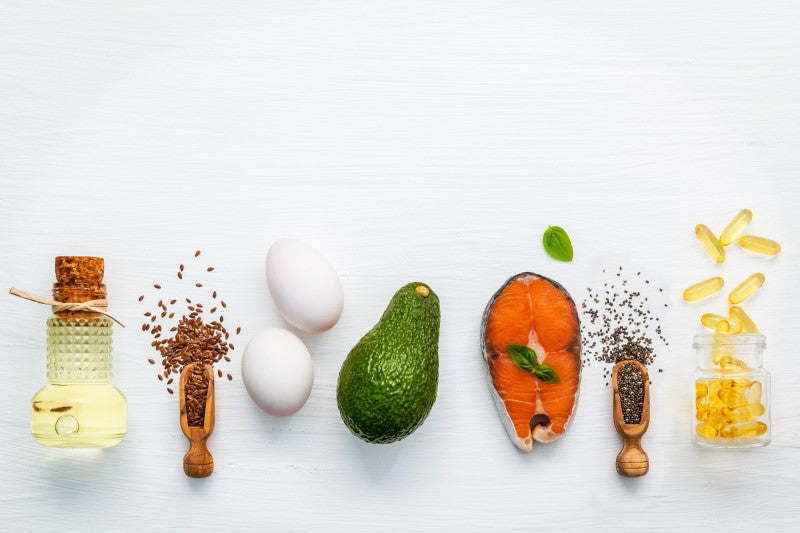
Count Your Macros? What the Heck is a Macronutrient?
As a fat chick all my life I never knew what a macro was. I did, however, know what a calorie was. They were pretty much the devil in my book.
I did the school thing and was a registered nurse for a long while. In school they touched on the different “macronutrients” but I had absolutely no idea the correct percentages were supposed to be unless I was studying for a test the night before, nor did I really even remember what they represented.
So, I did the logical thing to lose my weight and what every woman in the free known world does - I lowered my calories so that I was nice and hungry and worked out until exhaustion.
After all, isn’t that what all the magazines tell us to do?
I remember reading one of those fitness magazines and seeing the whole layout of the girl they were featuring that day. She was thin, lithe, tall, and totally hot.
Oh, I am sure she was like 20 years old, too. Basically, I wanted to be like her and shank her at the same time.
OK, back to the point...
She gave a rundown of her workout and what she ate in a day. Of course, everyone eats oats and egg whites... TOGETHER, every day with black coffee.
Yum. I am saying this in a totally sarcastic way, just in case you didn’t get that.
Her total calorie count was like 1500. Her workout was 1 1/2 hours a day with a ton of cardio mixed in with body weight stuff.
The camera is supposed to add 10 pounds, but this girl looked small. Like so small she may have hailed from starvation-suffering third world country.
I remember that I was actually jealous that she could eat 1500 calories. After all, when I was reading this magazine, I was almost to my goal weight and running 40 miles a week. I was also eating a whopping 1300 calories.
If I ate more, I would gain weight.
Oh, and did I mention I looked nothing like her?? Like at all. I had loose skin everywhere, I still had to roll up my boobs to get them into my bra, and my whole butt was still behind my knees.
Thank you, Jesus, for spanks.Bitter is what I was. Totally bitter.
I had lost all this weight and found that I couldn’t eat more than 1300 calories - and I looked like crap, to boot. Losing weight sucked. I was about to give up until...
I googled, “How to make more muscle as a woman.” That lead to reading not only about exercises but about these weirdo “macros” I had heard whisperings about.
So, if you have never heard about macros, here is how I will explain it from one newbie to another.
- Macros are short for macronutrients. They represent a carbohydrate, a protein and a fat.
- Macronutrients can be manipulated so that you can gain muscle... WHHHHAAAAATTT?

I heard that last part and was stunned. I had been a nurse for years, and that isn’t what I had heard. Maybe these bodybuilders were high or something when they were talking about macros, but I wanted to know more.
So, of course, I YouTubed it. I learned that if you eat more protein you will make more muscle - that should have been a “duh” moment for me; especially since trainers in the past had told me that.
However, I thought they were trying to sell me protein powder, and I wasn’t down with that. I was a hardcore vegetarian that ate nothing and thought I knew everything.
I found what the basic formula was for macros that a lot of people start out on - the 40/40/20 plan. 40% of your calories come from protein, 40% from carbohydrates and 20% from fat.
Man, this was complicated stuff.
Thank god for Myfitnesspal, which calculates that stuff for you. Once I found out how to do it on the app, I could plan my meals out.
However, it’s not that easy. You also should know a thing or two about each macronutrient and how they work. I mean, we hear on the news at one time or another some expert talking about how one or all three of the macronutrients are “the devil.”
I was confused, frustrated and had absolutely no idea what I was doing.
This is what I learned:
Carbs. Carbs are NOT bad for you. There are four calories in a gram of carbohydrates. Carbs are used for immediate fuel - that's why I took in GU when I ran (I just thought it tasted like frosting, so I bought it; who knew there was a reason behind it).
Carbs should be used in instances that you are using a lot of energy such as sprinting, HIIT training, etc. If you are hitting it hard at the gym, you should be eating carbs.
Protein.Protein is made up of amino acids and are the building blocks of muscle. There are four calories in a gram of protein.
So, suffice it to say, you should be eating protein in order to make muscle. There are conflicting views on how much, but when I started out, I was NOT an athlete, so I did one gram of protein per 1/2 a pound of my body weight. So around 75 is what I started with.
Now, if you are doing the 40/40/20 plan, it may be a little different and maybe a bit more. I promise you won't die if you take in more protein, you will just pee it out. Unless you have kidney failure...That's a whole other controversial animal that we won't get into here.
Fats. Fats make up your cell walls and cholesterol and contrary to popular belief is not bad for you. You need fats for energy when carbs are not available. There are nine calories in a gram of fat.
It is more calorically dense. It tastes delicious-so how could it be bad for you?
So now you have the basics. If you have 1300 calories to work with (like I did), and don’t have an app and want to know how to figure out this percentage thing, you times 1300 x 0.4. When you do that you get 520 calories that should come from carbs, same for protein. Then the rest will come from fats (260 calories to be exact).
Those ratios can be with 1300 calories or 2300 calories. The thing is, you are just counting macros now, versus calories.
Sometimes the macros don’t add up perfectly to the calories. It doesn’t matter, in my opinion. I count one or the other.
Now, you can keep that ratio and see if you are feeling good about it.
That ratio sucked for me.
I am an older, menopausal woman that has hormone issues. This is important to note, not only from my husband's standpoint (run, she has a knife in her hand in the kitchen, lord knows if she is cutting onions or plotting someone's demise) because fats help to make up hormones.
For me, I need a lot more fat in my diet to feel less homicidal.
So I went with different macro percentages until I got it right. I used my body as an experiment, as you should do. Nobody is the same; just like I needed more fat because I am in menopause, a 20-year-old woman may not do well on my percentages.
Another great thing about macros - like the thing I love the most - I can have my cake and eat it, too, kinda. If I am tracking, I eat to my macro needs.
It is a more balanced way of doing it for me because doing calorie counting, I could eat a piece of cake and that would be 1300 calories; then nothing more throughout the day.
It was awful.
I’m not that bright, and I would do that more than I should have. I can’t really do that now because I have different macronutrients to get in.
Protein keeps me fuller and I’m not just eating all carbs, which is what I was doing as a calorie-counting vegetarian.
This is like a stop gap for me.
I eat more protein, I am fuller, I have more macronutrient diversity than when I was a vegetarian and I am making muscle. Well, when I am in a caloric surplus that is.
I would highly suggest you go outside your comfort zone of calorie counting or point counting when you get stuck. There are great macro counters online that can give you a baseline of what your macronutrient needs may be.
These counters are in the basic ratio category, and they don’t account for individuality - and that’s ok. It’s a great place to start and then you can tweak it along the way.
It’s important for you to realize there is only one absolute. That is that there are no absolutes. If someone tells you that you have to macro count to lose weight, or that you have to count calories to lose weight - they are both wrong.

Comments
Leave a comment